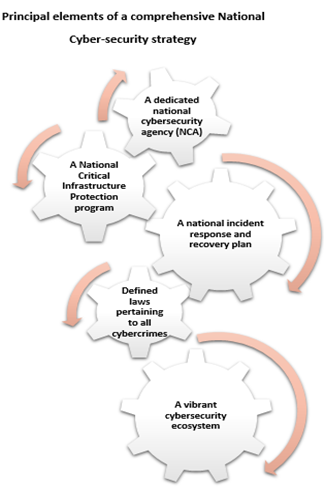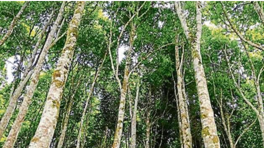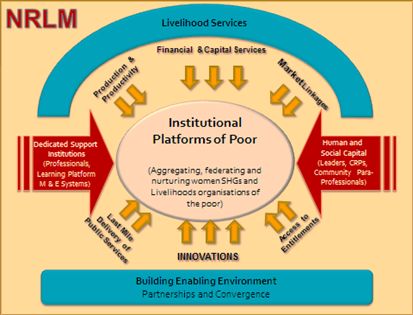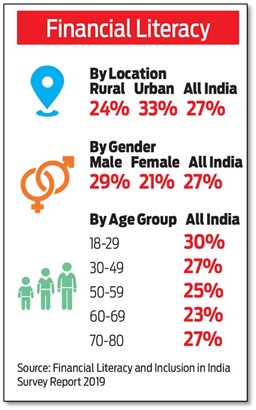Tuesday, 27th July 2021
13-point agenda for safety of women, kids, SC/STs.
In News
The Union government has listed a 13-point agenda to ensure the safety and security of women, children and SC/STs.
About the News
- The Agenda: The government has listed a 13-point agenda to ensure the safety and security of women, children and SC/STs, which includes online reporting of sexual abuse and distribution of pornographic material, zero FIRs into complaints of rape and fixing accountability of police personnel, among other measures.
- Zero FIR is the mode of lodging FIR in any police station irrespective of the offense committed in that area or any other area. There is no restriction over the informant to lodge zero FIR.
- Ensure quick action: The centre has directed the states to ensure no delay and denial of justice to victims and families in cases of crimes against women and children, and take steps to promote online registration of FIRs and device mechanisms to check whether FIRs, including zero FIRs, are being registered in time.
- Raise Awareness: States and UTs may raise awareness through print and electronic media, including social media in local languages, about the mechanisms available to citizens for reporting cyber crime against women and children, particularly for sexual abuse as well as distribution of pornographic material, and legal awareness on the prevention of domestic violence.
Why does the government need to prioritise the safety of women, kids, SC/STs?
- Increased Crimes: According to the National Crime Records Bureau (NCRB), crimes against women increased 7.3% from 2018 to 2019, and crimes against Scheduled Castes also went up 7.3% in the same period. In 2018, the government set up a dedicated branch to deal with the rising cases of crime against women and children.
- Low conviction rates: The conviction rate in crimes against women and children is low. Against a target of 1,023 fast track courts for cases related to rape and matters under the Protection of Children from Sexual Offences Act, 2012 (POCSO), only 597 courts are operational.
- Poor implementation of laws: The major reason for the increase in crimes against SC/ST women and children in recent years has been due to the poor implementation of the existing laws and the apathetic attitude of the law enforcing agencies.
- Difficulty in registering cases: Women from Scheduled Castes (SCs) and Scheduled Tribes (STs) face difficulty in getting cases of atrocities and crimes registered. COVID-19 pandemic and subsequent lockdown led to an increase in domestic violence, and trafficking.
Sources:
Periodic Labour Force Survey (PLFS) 2019- 2020
In News
The third annual report on Periodic Labour Force Survey (PLFS) for the duration of July 2019 and June 2020, has been recently released.
About PLFS
- The PLFS is an annual survey conducted by the National Statistical Office. It was started in 2017 and it essentially maps the state of employment in the country.
- It collects data on several variables such as the level of unemployment, the types of employment and their respective shares, the wages earned from different types of jobs, the number of hours worked etc. Earlier this job was done by Employment-Unemployment Surveys, which were conducted once in five years.

Sources:
India’s Cyber Security Capabilities
In News
A recent report by the International Institute for Strategic Studies (IISS) has placed India in the third-tier country category with respect to cyber warfare capabilities.

Findings of the Report
- Third Tier: In the report titled ‘Cyber Capabilities and National Power: A Net Assessment’ by IISS, India has been put in the third tier meant for countries that have strengths in some of these categories but significant weaknesses in others. The US was the only country in the top tier.
- Doctrine of cyber-Security: Despite the geo-strategic instability of its region and a keen awareness of the cyber threat it faces, India has made only “modest progress” in developing its policy and doctrine for cyberspace security. India has some cyber-intelligence and offensive cyber capabilities, but they are regionally focused, principally on Pakistan.
- Cyber governance: India’s approach towards institutional reform of cyber governance has been slow and incremental, with key coordinating authorities for cyber security in the civil and military domains established only as late as 2018 and 2019 respectively.
- Cyber-Intelligence: India’s cyber-intelligence tends to rely on partnerships such as those with the U.S., the U.K. and France for a higher level of cyber situational awareness and to help it develop a greater reach of its own in future.
- Strengths: The strengths of the Indian digital economy include a vibrant start-up culture and a very large talent pool. The private sector has moved more quickly than the government in promoting national cyber security.
Need for Developing Cyber Security Capabilities
- Cyber-warfare: It is emerging as the next frontier of war. The states target the enemy’s electricity grids, health systems, water supplies and communications. Sophisticated cyber-attacks with the possible involvement of state actors are carried out to impose costs as well as to send a message to the adversaries.
- National Security: As a nuclear power with large conventional forces, a burgeoning digital economy and a determination to increase its geopolitical influence, India is the target of cyber espionage by a wide range of states.
- Growing vulnerabilities with Digitization: As India moves aggressively towards universal digitization—from individual identities and government services to financial transactions and vehicular movement—we are generating incredible amounts of data. Access to this data translates into enormous power.
- Cyber capability use in Terrorism: Security establishments around the world are grappling with questions about the possible use of cyber capabilities by terrorist groups. In the past, Islamic State of Iraq and Syria (ISIS) had used cyberspace to spread its message and attract recruits.
- Non-traditional nature of Cyber threat: The borderless nature of cyberspace, and more importantly anonymity of actors involved, has challenged the traditionally accepted concepts of sovereignty, jurisdiction and privacy. Russia’s alleged intervention in the American elections is a good example of such attacks and disinformation campaigns.
- Cyber capabilities in Space: As the Indian and Chinese space programs gain ground, we should expect space to be much more contested in terms of satellite jamming, position spoofing, and potentially kinetic space operations.

What can be done to develop cyber security capabilities?
- Multination cyber coalition (MNCC): India can benefit from leading an effort to create a MNCC, a common defence partnership for countries in Asia. The MNCC countries would harness their collective cyber capabilities and knowledge to better identify and respond to cyber-attacks. It could resemble NATO’s approach to cyber defence. While countries are still responsible for their own cyber defences, NATO supports its members by sharing real-time intelligence on threats and best practices for handling such threats.
- Effective utilization of tech-talent: India boasts many engineers, programmers, and information security specialists. India can expand its cyber-espionage capabilities through the talent involved in the so-called ‘hacking-as-a-service’ (HaaS).
- Defend Forward: India can follow the lead of the US and UK in the "defend forward" doctrine of acting in advance to disable threats that are supported by high-confidence intelligence. One indication of this was a recent revision to the Foreign Trade Act, which now includes a prohibition on exporting software specially designed or modified for the conduct of military cyber operations.
- Delivery Vehicles: India needs to speed up the development of defensive capabilities to counter the "new normal" of autonomous kinetic delivery vehicles — basically, drones with bombs. These are being increasingly used around the world, and without electronic or cyber countermeasures in place, there are few ways to mitigate the effects of robotic combat.

Conclusion
Given the rise in cyber capabilities and threat of cyber warfare, India will need to expand its cyber-intelligence reach to be able to deliver sophisticated offensive effect further afield. India’s close collaboration with international partners, especially the US, will help it in that regard. The rise of India's cyber capabilities may also be good for the global balance of power; it may become a catalyst for bringing countries to the table to develop norms and enforcement methods.
Question: Discuss the need for India to develop its cyber capabilities. What steps can be taken by India in this direction?
Sources:
- CYBER CAPABILITIES AND NATIONAL POWER: A NET ASSESSMENT
- India’s Cyber Security: A look at the Approach and the Preparedness
- India’s Response to China’s Cyber Attacks
- The Anatomy Of Cyberwarfare: Is India Ready To Take On China?
- Follow the leaders: How governments can combat intensifying cybersecurity risks
- Offence could well be the best defence in cyber warfare
- Indian cyber-espionage activity rising amid growing rivalry with China, Pakistan
- India: A Growing Cybersecurity Threat
This Day in History- APJ Abdul Kalam
On July 27, 2015 Avul Pakir Jainulabdeen Abdul Kalam, the former president of India, passed away. While Dr APJ Abdul Kalam served as the 11th President of India, he was an instrumental force behind the development of Agni and Prithvi missiles. Dr Kalam also authored numerous books, including the famous Wings of Fire and Ignited Minds. Dr. Kalam had worked with the DRDO and ISRO and was the project director for the SLV-III, the first satellite launch vehicle, designed and produced in India. He implemented the Integrated Guided Missile Development Program, which later earned him the famous nickname of the "Missile Man of India". Dr Kalam played a critical role in India's 1998 nuclear weapon test under.

Source:
Image of the Day- Jupitor’s auroras
This is the image of Jupiter’s auroras at the north and south poles of the planet, which has been shared by NASA. The purple hues in this image show the X-ray emissions from Jupiter’s auroras. Jupiter has the most powerful auroras in the solar system and is the only one of the four giant planets with an aurora that has been found to emit X-rays. The Auroras have been formed by the electrically charged atoms, or ions, responsible for the X-rays, “surfing” the electromagnetic waves in Jupiter’s magnetic field.

Sources:
Typhoon In Fa
- Context: China's national observatory had issued orange alert for typhoon In-Fa, which made landfall in Zhejiang province.
- Typhoons (Tropical Cyclones) is a rapid rotating storm originating over tropical oceans from where it draws the energy to develop.
- It has a low-pressure center and clouds spiraling towards the eyewall surrounding the "eye", the central part of the system.
- Its diameter is typically around 200 to 500 km, but can reach 1000 km.
- A tropical cyclone brings very violent winds, torrential rain, high waves and, in some cases, very destructive storm surges and coastal flooding.
- The winds blow counterclockwise in the Northern Hemisphere and clockwise in the Southern Hemisphere.

Source:
- China renews 2nd-highest alert for typhoon In-Fa
- Tropical Cyclones
- What is the difference between a hurricane and a typhoon?
Image Source:
Agar Wood (Aquilaria malaccensis)
- Context: Tripura government has released the ‘Tripura Agar Wood Policy 2021,’ to double agarwood plantation by 2025.
- Agar wood is an evergreen tree that produces one of the world’s most valued woods whose resin extract is widely used in perfumes and incense. It can grow to 40 metres.
- It is native to Northeast India (Assam-Agarwood capital of India), Bangladesh, Bhutan, and parts of Southeast Asia.
- Since it is an economically important and fast-growing species, it is subject to over exploitation.
- It has been moved from ‘vulnerable’ to ‘critically endangered’ in IUCN Red List as logging and deforestation caused its population to decline by more than 80% over the past 150 years.

Source:
- Tripura initiates steps to promote cultivation of Agar to transform the Economy
- India’s perfume tree agarwood a step away from extinction
- Facing extinction, India’s scented agarwood is finding ways to grow in home gardens, polluted fields
Image source:
Moon-forming region around Exoplanet
- Context: Scientists for the first time have spotted a moon-forming region around a planet beyond our solar system (exoplanet).
- Scientists detected a disc of swirling material accumulating around two exoplanets seen orbiting a young star called PDS 70 (located a relatively close 370 light years from Earth).
- It is called a circumplanetary disc, and it is from these that moons are born.
- The disc around PDS 70c (The exoplanet), with a diameter about equal to the distance of the Earth to the sun, possesses enough mass to produce up to three moons the size of Earth's moon.
- The Atacama Large Millimeter Array (ALMA) observatory in Chile's Atacama desert- the most complex astronomical observatory ever built on Earth was used to detect the disc.
- The ALMA is a radio telescope system and is an international partnership operated by the US, European Union and Japan.

Source:
- Moon-forming region seen around exoplanet for the first time
- Atacama Large Millimeter/submillimeter Array
- ALMA
Image source:
Indecent Representation of Women (Prohibition) Amendment Bill
- Context: The government has decided to withdraw the Indecent Representation of Women (Prohibition) Amendment Bill, introduced in the Rajya Sabha in 2012.
- The bill sought to amend the Indecent Representation of Women (Prohibition) Act, 1986, which prohibits indecent representation of women through advertisements or publications, writings, and paintings (primarily the print media).
- The Bill also sought to widen the scope of the Act to cover new forms of communication such as the internet, satellite-based communication, cable television etc.
- It aimed to bring in penalty provisions similar to that provided under Information Technology Act 2000 and create a centralized authority under the aegis of National Commission for Women.
- The Government stated that apart from the Indian Penal Code, since laws such as Cinematography Act 1952, the new IT rules 2021, the CBFC guidelines dealt with online media and have provisions to specifically address the issue, it has decided to withdraw the bill.

Source:
- Citing IT rules, other laws, Govt withdraws Bill on Women portrayal in media
- Government withdraws indecent representation of women amendment bill
- Government withdraws bill on portrayal of women in online media: Report
Image source:
Reliving the landmark 1991 economic reforms
Essence: 1991 Economic Reforms of India came in the backdrop of acute economic crisis in India when the balance of payment (BoP) became unmanageable. Then newly formed Narsimha Rao government that time took two crucial steps to tackle the situation. First, announcement of new industrial policy to liberalise the economy; second, addressing the BoP problem and the structural rigidities. In this way the foundation for a new era of development was laid by the Rao-Singh duo, which was built upon by all successive governments and helped our country emerge as one of the fastest growing economies in the world.
Why should you read this article?
- To get an overview of 1991 Economic Reforms of India.
- To know steps taken by the then government to tackle the situation which led to foundation of new era of development in India.
Source-
An emigration Bill that does not go far enough- TH
Essence: The editorial talks about the new Emigration Bill 2021 that replaces the age-old Emigration Act of 1983. The bill outlines obligations of the agency to research for the causes of exploitation and unnatural deaths in certain cases and conduct due diligence of the potential employer. It also streamlines various procedures to ensure rights for the workers going abroad.
However, the bill lacks certain frameworks for holistic human rights of laborers and their families; the control of exorbitant fees charged by agencies from the poor workers; fine and penalty to the illiterate workers for having violated the provisions of the new law. In addition, the new bill doesn’t provide for gender dimension of labor migration, thus leaving scope for female labor exploitation.
Why you should read this article?
- To understand the nuances of labor-agency interaction while emigrating for work abroad.
- To know the lacunae of the new bill and how they can be overcome.
Source:
Science and technology is central to strong and lasting Indo-US ties
Essence: Editorial presents the need to analyse opportunities in Indo-US relations & how nature of challenges demands shift towards partenering on next gen quantum computers, AI, genome sequencing, affordable designing and building the next generation of airplanes running on clean energy. The editorial also presents the history of relationship between the two countries.
The bipartisan support in the US Congress, the influential India-American community, and the role of US business leaders who see India as the next big production centre and market are other factors that played a role. 21st century wars will not be fought with boots on the ground or physical machines. It is science, technology, and trade that will determine who wins or loses the war. Therefore, the focus in the India-US relationship needs to shift to science, technology, and trade.
Why you should read this article?
- To understand the background story of Indo-US ties.
- It provides insights into the recent global shift which demands reorientation of bilateral priorities.
- To obtain an understanding of how both the countries are strategically important to each another.
Source:
Sacred Grooves: An ancient tradition of nature conservation
Background:
- Sacred grooves are patches of primeval forestthat indigenous communities protect as abodes of deities.
- Colonial resource extraction has devastatedthe ancient network of sacred groves in India.
Importance of sacred grooves:
- Ecological benefits that communities derive such as protection of environment, preserving pristine spaces.
- Tribal rights: It upholds the rights of tribe to manage forests.
- Preserves ecosystem: Sacred grooves protects ecosystem in entirety rather than protecting forest in artificial manner. Such an approach values nature for the ecological services it provides.
Local practices to protect sacred grooves:
- Gumpa forests in Arunachal Pradesh
- Sarna in Chhattisgarh
- Beed in Haryana
- Devkad in Karnataka
Source:
Share the article
Get Latest Updates on Offers, Event dates, and free Mentorship sessions.

Get in touch with our Expert Academic Counsellors 👋
FAQs
UPSC Daily Current Affairs focuses on learning current events on a daily basis. An aspirant needs to study regular and updated information about current events, news, and relevant topics that are important for UPSC aspirants. It covers national and international affairs, government policies, socio-economic issues, science and technology advancements, and more.
UPSC Daily Current Affairs provides aspirants with a concise and comprehensive overview of the latest happenings and developments across various fields. It helps aspirants stay updated with current affairs and provides them with valuable insights and analysis, which are essential for answering questions in the UPSC examinations. It enhances their knowledge, analytical skills, and ability to connect current affairs with the UPSC syllabus.
UPSC Daily Current Affairs covers a wide range of topics, including politics, economics, science and technology, environment, social issues, governance, international relations, and more. It offers news summaries, in-depth analyses, editorials, opinion pieces, and relevant study materials. It also provides practice questions and quizzes to help aspirants test their understanding of current affairs.
Edukemy's UPSC Daily Current Affairs can be accessed through:
- UPSC Daily Current Affairs can be accessed through Current Affairs tab at the top of the Main Page of Edukemy.
- Edukemy Mobile app: The Daily Current Affairs can also be access through Edukemy Mobile App.
- Social media: Follow Edukemy’s official social media accounts or pages that provide UPSC Daily Current Affairs updates, including Facebook, Twitter, or Telegram channels.


![Production-linked Incentive (PLI) Scheme for Specialty Steel • Digital Rupee • Renewable Energy Certificate (REC) Mechanism • This Day in History - Bal Gangadhar Tilak • Image of the Day – King Cobra • Project 75 (India) [P-75(I)] • Harela Festival • Avian Flu/ H5N1 • Expanding India’s foreign policy canvas – Hindustan Times • Bangladesh's Microfinance: Case study for reducing poverty](https://edukemyprodstorage.blob.core.windows.net/edukemy-v2-assets-public/newsletter-images/1627053778blobid1627053773170.jpg/6qOdfWHokMxecfCInlsNiohdzUmiiR170zseon9s.jpg)


